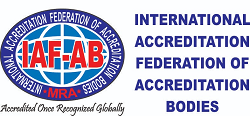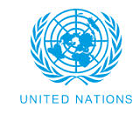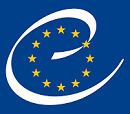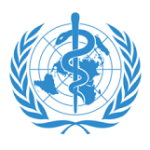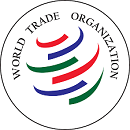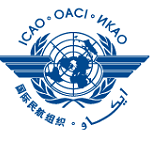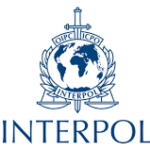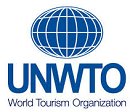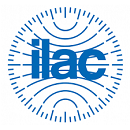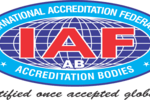- Introduction
- Refrences
- International Association Members
- International Reginal Members
- International Observer Members
- Accreditation Body ISO 17011
- Inspection Body ISO 17020
- Certification Body ISO 17021
- Product Certification Body ISO 17065
- Accreditation Laboratory ISO 17025 / ISO 15185
- Rating Agencies ISO 14064 / ISO 17021
- Previledge Memberships
- GHG Verification / Validator
Andorra, officially the Principality of Andorra, is a sovereign landlocked country on the Iberian Peninsula, in the eastern Pyrenees in Western Europe, bordered by France to the north and Spain to the south. Believed to have been created by Charlemagne, Andorra was ruled by the count of Urgell until 988, when it was transferred to the Roman Catholic Diocese of Urgell. The present principality was formed by a charter in 1278. It is currently headed by two co-princes: the Bishop of Urgell in Catalonia, Spain, and the president of France. Its capital and largest city is Andorra la Vella.
Andorra is the sixth-smallest state in Europe, with an area of 468 square kilometres (181 sq mi) and a population of approximately 79,034. The Andorran people are a Romance ethnic group closely related to Catalans. Andorra is the world’s 16th-smallest country by land and 11th-smallest by population. Its capital, Andorra la Vella, is the highest capital city in Europe, at an elevation of 1,023 metres (3,356 feet) above sea level.+ The official language is Catalan, but Spanish, Portuguese, and French are also commonly spoken.
Tourism in Andorra brings approximately 8 million visitors to the country annually. Andorra is not a member state of the European Union. It has been a member of the United Nations since 1993.
Etymology
The origin of the word Andorra is unknown, although several hypotheses have been proposed. The oldest is one put forward by the Greek historian Polybius (The Histories III, 35, 1), who describes the Andosins, an Iberian Pre-Roman tribe, as historically located in the valleys of Andorra and facing the Carthaginian army in its passage through the Pyrenees during the Punic Wars. The word Andosini or Andosins (Ἀνδοσίνοι) may derive from the Basque handia, meaning “big” or “giant”. The Andorran toponymy shows evidence of Basque language in the area. Another theory suggests that the word Andorra may derive from the old word Anorra that contains the Basque word ur (“water”).
Another theory suggests that Andorra may derive from Arabic ad-dārra (الدَّارَة), indicating a vast land which is located among mountains or a thickly wooded place (with ad- being the definite article). When the Moors conquered the Iberian Peninsula, the valleys of the High Pyrenees were covered by large tracts of forest. These regions were not administered by Muslims, because of the geographic difficulty of direct rule.
- “Andorran Symbols”. WorldAtlas. 29 March 2021.
- ^ Jump up to:a b c “Constitution of the Principality of Andorra” (PDF). Archived (PDF) from the original on 16 May 2019.
- ^ Jump up to:a b c d e “Andorra”. The World Factbook (2024 ed.). Central Intelligence Agency. Retrieved 26 August 2012. (Archived 2012 edition.)
- ^ “National Profiles | World Religion”. www.thearda.com.
- ^ Temperman, Jeroen (2010). State–Religion Relationships and Human Rights Law: Towards a Right to Religiously Neutral Governance. BRILL. ISBN 9789004181496.
… guarantees the Roman Catholic Church free and public exercise of its activities and the preservation of the relations of special co-operation with the state in accordance with the Andorran tradition. The Constitution recognizes the full legal capacity of the bodies of the Roman Catholic Church which have legal status in accordance with their own rules.
- ^ “Història d’Andorra”. Cultura.ad (in Catalan). Retrieved 26 March 2019.
- ^ “Andorra”. Enciclopèdia.cat (in Catalan). Retrieved 26 March 2019.
- ^ “Andorra en xifres 2007: Situació geogràfica, Departament d’Estadística, Govern d’Andorra” (PDF). Archived from the original (PDF) on 13 November 2009. Retrieved 26 August 2012.
- ^ “Departament d’Estadística”. Retrieved 8 July 2024.
- ^ Jump up to:a b c d “Report for Selected Countries and Subjects: April 2024”. imf.org. International Monetary Fund.
- ^ “Informe sobre l’estat de la pobresa i la desigualtat al Principal d’Andorra (2003)” (PDF). Estadistica.ad. Archived from the original (PDF) on 10 August 2013. Retrieved 25 November 2012.
- ^ “Human Development Report 2023/24” (PDF). United Nations Development Programme. 13 March 2024. Retrieved 13 March 2024.
- ^ “What side of the road do they drive on in Andorra”. Retrieved 19 March 2019.[permanent dead link]
- ^ Roach, Peter (2011). Cambridge English Pronouncing Dictionary (18th ed.). Cambridge: Cambridge University Press. ISBN 978-0-521-15253-2.
- ^ Jump up to:a b “World Population Prospects 2022”. United Nations Department of Economic and Social Affairs, Population Division. Retrieved 17 July 2022.
- ^ Jump up to:a b “World Population Prospects 2022: Demographic indicators by region, subregion and country, annually for 1950-2100” (XSLX) (“Total Population, as of 1 July (thousands)”). United Nations Department of Economic and Social Affairs, Population Division. Retrieved 17 July 2022.
- ^ Jump up to:a b Minahan, James (2000). One Europe, Many Nations: A Historical Dictionary of European National Groups. Greenwood Publishing Group. p. 47. ISBN 978-0313309847.
- ^ Malankar, Nikhil (18 April 2017). “Andorra: 10 Unusual Facts About The Tiny European Principality”. Tell Me Nothing. Archived from the original on 7 June 2017. Retrieved 13 June 2017.
- ^ “Maps, Weather, and Airports for Andorra la Vella, Andorra”. Fallingrain.com. Retrieved 26 August 2012.
- ^ “Background Note: Andorra”. State.gov. Retrieved 14 May 2015.
- ^ Jump up to:a b c “Andorra”, The World Factbook, Central Intelligence Agency, 4 October 2024, retrieved 12 October 2024
- ^ “United Nations Member States”. Un.org. Retrieved 28 October 2022.
- ^ Diccionari d’Història de Catalunya; ed. 62; Barcelona; 1998; ISBN 84-297-3521-6; p. 42; entrada “Andorra”
- ^ Font Rius, José María (1985). Estudis sobre els drets i institucions locals en la Catalunya medieval. Edicions Universitat Barcelona. p. 743. ISBN 978-8475281742.
- ^ “تعريف و معنى دارة في معجم المعاني الجامع – معجم عربي عربي”. almaany.com (in Arabic).
- ^ Gaston, L. L. (1912). Andorra, the Hidden Republic: Its Origin and Institutions, and the Record of a Journey Thither. New York: McBridge, Nast & Co. p. 9.
- ^ “Online Etymology Dictionary”. Etymonline.com. Archived from the original on 10 May 2015. Retrieved 14 May 2015.
- ^ Freedman, Paul (1999). Images of the Medieval Peasant. California: Stanford University Press. p. 189. ISBN 978-0804733731.
- ^ “La Margineda – El Camí”. 21 April 2014. Archived from the original on 15 October 2014.
- ^ Jump up to:a b Guillamet Anton 2009, pp. 32, 33.
- ^ Jump up to:a b c d e f Armengol Aleix 2009, pp. 44 a 92.
- ^ Guillamet Anton 2009, pp. 34, 35, 38, 39.
- ^ “Mapes Vius – Linguamon. Casa de les Llengües”. 22 May 2010. Archived from the original on 22 May 2010.
- ^ Guillamet Anton 2009, p. 43.
- ^ Jump up to:a b Guillamet Anton 2009, pp. 36, 37.
- ^ Jump up to:a b Guillamet Anton 2009, pp. 44, 45, 46, 47.
- ^ Guillamet Anton 2009, pp. 52, 53.
- ^ Jump up to:a b c d Armengol Aleix 2009.
- ^ “El pas de Carlemany – Turisme Andorra la Vella”. turisme.andorralavella.ad. Archived from the original on 3 August 2017. Retrieved 3 August 2017.
- ^ Vidal, Jaume. “Andorra mira els arxius”. Elpuntavui.cat. Retrieved 3 August 2017.
- ^ “La formació d’Andorra”. Gran Enciclopèdia Catalana. Enciclopèdia Catalana. (in Catalan)
- ^ Jump up to:a b c “Elements de la història del Principat d’Andorra” (in Catalan). Archived from the original on 9 February 2010.
- ^ Jump up to:a b c d Armengol Aleix 2009, pp. 96 a 146.
- ^ “Ermessenda de Castellbò”. Gran Enciclopèdia Catalana. Enciclopèdia Catalana. (in Catalan)
- ^ Jump up to:a b Guillamet Anton 2009.
- ^ Guillamet Anton 2009, pp. 60, 61.
- ^ Guillamet Anton 2009, pp. 78, 79, 80, 81, 88, 89.
- ^ “Absis d’Engolasters – Museu Nacional d’Art de Catalunya”. Museunacional.cat. Archived from the original on 3 August 2017. Retrieved 3 August 2017.
- ^ Guillamet Anton 2009, pp. 48, 49.
- ^ Armengol Aleix 2009, pp. 150 a 194.
- ^ “HISTÒRIA DE LA LLENGUA CATALANA” (PDF). Racocatala.cat. Archived from the original (PDF) on 4 March 2016. Retrieved 3 August 2017.
- ^ Llop Rovira 1998, pp. 44, 45, 47, 48, 50.
- ^ Guillamet Anton 2009, pp. 108, 109.
- ^ Armengol Aleix 2009, pp. 238, 239.
- ^ Llop Rovira 1998, pp. 44, 45, 47, 48, 50, 53, 54, 56.
- ^ Llop Rovira 1998, p. 14.
- ^ Llop Rovira 1998, p. 15.
- ^ Guillamet Anton 2009, p. 134.
- ^ “390.000 euros per rehabilitar l’exterior i obrir els jardins de la Casa Rossell – BonDia Diari digital d’Andorra”. 9 August 2016. Archived from the original on 9 August 2016.
- ^ Llop Rovira 1998, pp. 20, 21.
- ^ Guillamet Anton 2009, pp. 106, 107.
- ^ Guillamet Anton 2009, pp. 105, 106, 107, 140, 141.
- ^ Armengol Aleix 2009, pp. 263 a 270.
- ^ Llop Rovira 1998, p. 60.
- ^ Guillamet Anton 2009, p. 82.
- ^ Armengol Aleix 2009, p. 229.
- ^ Llop Rovira 1998, pp. 49 a 52, i 57, 58.
- ^ Armengol Aleix 2009, p. 172.
- ^ Guillamet Anton 2009, p. 172.
- ^ Armengol Aleix 2009, pp. 342–343.
- ^ Page 966, Volume 1, Encyclopædia Britannica, Eleventh Edition, 1910–1911
- ^ “Antoni Pol – 150 anys de la (nova) Reforma” (in Catalan). Archived from the original on 6 May 2019. Retrieved 2 February 2019.
- ^ Armengol Aleix 2009, pp. 192–193.
- ^ Guillamet Anton 2009, pp. 191–193.
- ^ Armengol Aleix 2009, pp. 345–347.
- ^ Saqueo de Canillo por las fuerzas del gobierno revolucionario tras el sitio de la aldea (in Spanish). J. J. Dubochet. 12 March 1881. Retrieved 3 August 2017.
{{cite book}}:|website=ignored (help) - ^ Armengol Aleix 2009, pp. 198–203.
- ^ Peruga Guerrero 1998, pp. 59–63.
- ^ Ministeri d’Educació, Joventut i Esports 1996, pp. 58–65.
- ^ Armengol Aleix 2009, pp. 194–195.
- ^ Armengol Aleix 2009, pp. 348–350.
- ^ Peruga Guerrero 1998, pp. 64–68.
- ^ Ministeri d’Educació, Joventut i Esports 1996, pp. 67–70.
- ^ Guillamet Anton 2009, pp. 198–203.
- ^ Armengol Aleix 2009, pp. 352–353.
- ^ Peruga Guerrero 1998, pp. 78–81.
- ^ Ministeri d’Educació, Joventut i Esports 1996, p. 74.
- ^ Armengol Aleix 2009, pp. 354–357.
- ^ “Rebellion in Andorra 1933 – International Club of Andorra”. International-club-andorra.com. Archived from the original on 6 May 2019. Retrieved 29 December 2017.
- ^ “1933: la República que quasi va ser”. BonDia Diari digital d’Andorra.
- ^ “Príncipes de Andorra” – via PressReader.
- ^ “Quan vam treure l’escopeta”. BonDia Diari digital d’Andorra.
- ^ Marsenyach, Albert Daina. “Boris I Rei d’Andorra”. El Coprincipat d’Andorra ara fa molt de temps. Archived from the original on 16 January 2020. Retrieved 22 January 2019.
- ^ “La primera Constitució”. BonDia Diari digital d’Andorra. Archived from the original on 6 May 2019. Retrieved 18 January 2019.
- ^ “‘King’ Boris of Andorra Is Sent to Jail in Spain”. The New York Times. 20 September 1934.
- ^ “L’impacte dels refugiats durant la Guerra Civil”. El Periòdic d’Andorra. Archived from the original on 6 May 2019. Retrieved 21 January 2019.
- ^ “1937: Baulard compta morts”. BonDia Diari digital d’Andorra. Archived from the original on 6 May 2019. Retrieved 14 January 2019.
- ^ “La revolución andorrana del 1933” (PDF). Publicacions.iec.cat. Archived (PDF) from the original on 9 October 2022. Retrieved 26 March 2019.
- ^ “Franquisme i repressió – Cadí-Pedraforca – Editorial Gavarres”. Editorialgavarres.cat. Archived from the original on 6 May 2019. Retrieved 21 January 2019.
- ^ Jump up to:a b “Jordi Sasplugas. El Mirador d’Andorra. Documental”. Archived from the original on 17 July 2019. Retrieved 21 January 2019.
- ^ “Andorra entre guerres”. El Periòdic d’Andorra. Archived from the original on 6 May 2019. Retrieved 14 January 2019.
- ^ “Antoni Pol – Francesc Cairat i Freixes”. El Periòdic d’Andorra. Archived from the original on 6 May 2019. Retrieved 22 January 2019.
- ^ “Exili i evasions al Principat d’Andorra durant la Guerra Civil Espanyola i la Segona Guerra Mundial 1936–1945” (PDF). Diposit.ub.edu. Retrieved 26 March 2019.
- ^ “Entrevista a Enric Melich Gutiérrez, maquis de la resistència francesa, passador de jueus i clandestins, activista anarquista, llibreter i sindicalista – En contra”. Blocs de VilaWeb. 21 July 2012.
- ^ “La cruïlla andorrana de 1933: la revolució de la modernitat”. Cossetania.com. Archived from the original on 27 March 2019. Retrieved 22 January 2019.
- ^ “Letter” (PDF). Aquiradioandorra.free.fr. Archived from the original (PDF) on 3 February 2019. Retrieved 26 March 2019.
- ^ Jump up to:a b “L’Andorra “fosca ” i l’Andorra “generosa ” durant la Segona Guerra Mundial Claudi Benet i Mas” (PDF). Publicacions.iec.cat. Archived (PDF) from the original on 9 October 2022. Retrieved 26 March 2019.
- ^ “1936–1945: dues guerres i un miracle”. BonDia Diari digital d’Andorra. Archived from the original on 6 May 2019. Retrieved 22 January 2019.
- ^ “L’últim del Palanques”. El Periòdic d’Andorra. Archived from the original on 6 May 2019. Retrieved 22 January 2019.
- ^ “¡Sigues britànic!”. El Periòdic d’Andorra. Archived from the original on 6 May 2019. Retrieved 22 January 2019.
- ^ “Baldrich, heroi de novel·la”. El Periòdic d’Andorra. Archived from the original on 6 May 2019. Retrieved 22 January 2019.
- ^ “Camina, Quimet, camina”. El Periòdic d’Andorra. Archived from the original on 6 May 2019. Retrieved 22 January 2019.
- ^ “‘En terres d’Andorra’, la primera obra de teatre escrita per un autor autòcton”. BonDia Diari digital d’Andorra. Archived from the original on 6 May 2019. Retrieved 22 January 2019.
- ^ “Andora”. Nevington War Museum. Retrieved 19 October 2022.
- ^ “Una d’odis sarracens a la vegueria”. El Periòdic d’Andorra. Archived from the original on 6 May 2019. Retrieved 22 January 2019.
- ^ Jump up to:a b c “La transformació econòmica d’Andorra durant el segle XX”.
- ^ Lorenzo, Sergi Esteves. “Exili i evasions al Principat d’Andorra durant la Guerra Civil Espanyola i la Segona Guerra Mundial 1936–1945” (PDF). University of Barcelona. Retrieved 1 July 2019.
- ^ “Petita crònica de la gran passió blanca”. El Periòdic d’Andorra. Archived from the original on 6 May 2019. Retrieved 22 January 2019.
- ^ Andorra Guides (30 April 2018). “Andorra’s Healthcare System”. Andorra Guides. Archived from the original on 6 May 2019. Retrieved 22 January 2019.
- ^ “La CE concluye un acuerdo de unión aduanera con Andorra”. El País. 18 December 1989.
- ^ “François Mitterrand alienta las reformas en Andorras”. El País. 27 September 1986.
- ^ “S.E. Charles de Gaulle”. Representació del S.E. Copríncep Francès al Principat d’Andorra. 23 October 1967. Archived from the original on 7 February 2023.
- ^ Antoni Pol (3 January 2018). “El copríncep De Gaulle”. El Periòdic d’Andorra. Archived from the original on 6 May 2019. Retrieved 22 January 2019.
- ^ “Els anys 50, l’inici del somni andorrà”. Andorra Difusió. 29 December 2017. Archived from the original on 6 May 2019. Retrieved 22 January 2019.
- ^ Mireia Aguilar (10 October 2018). “Sintonitzant la sobirania”. El Periòdic d’Andorra. Archived from the original on 6 May 2019. Retrieved 22 January 2019.
- ^ Ruiz-Medrano, Javi (24 February 2015). “Aquí Radio Andorra, la radio que divertía a los europeos”. DiariOmnipresente. Archived from the original on 23 January 2019. Retrieved 22 January 2019.
- ^ Bernardos, Gonzalo (26 September 2016). “La reinvenció d’Andorra: un encert estratègic”. Diari d’Andorra. Archived from the original on 23 January 2019. Retrieved 22 January 2019.
- ^ Marc Pons (2018). “Andorra tria el primer cap de govern de la seva història”. ElNacional.cat. Archived from the original on 6 May 2019. Retrieved 1 March 2018.
- ^ “Agreement in the form of an Exchange of Letters between the European Economic Community and the Principality of Andorra – Agreement between the European Economic Community and the Principality of Andorra – Joint Declarations”. EUR-Lex. 28 June 1990. 21990A1231(02). Archived from the original on 19 December 2023.
- ^ Jump up to:a b Nohlen, D. & Stöver, P. (2010) Elections in Europe: A data handbook, p. 160 ISBN 978-3-8329-5609-7
- ^ Nohlen & Stöver, p. 162
- ^ “Andorra y los organismos internacionales”. Exteriors.ad.
- ^ “Entrevista – ‘Andorra no quiere ser un lugar donde se recoja dinero negro'”. El País. 26 July 1996.
- ^ “DECISIÓN DEL CONSEJO de 11 de mayo de 2004 relativa a la posición que debe adoptar la Comunidad en relación con un acuerdo sobre las relaciones monetarias con el Principado de Andorra”. Eur-lex.europa.eu. Retrieved 26 March 2019.
- ^ “COMUNICACIONES PROCEDENTES DE LAS INSTITUCIONES, ÓRGANOS Y ORGANISMOS DE LA UNIÓN EUROPEA COMISIÓN EUROPEA”. Eur-lex.europa.eu. Retrieved 26 March 2019.
- ^ “The Constitution of the Principality of Andorra” (PDF). Andorran Data Protection Agency. Retrieved 15 May 2024.
- ^ “Documento BOE-A-1993-16868”. BOE.es. 30 June 1993. pp. 19876–19877. Retrieved 26 August 2012.
- ^ “El Sometent | Tourism”. Turisme.andorralavella.ad. 17 May 2011. Retrieved 26 August 2012.
- ^ Jump up to:a b “Decret veguers Sometent, del 23 d’octubre de 1984” (PDF). Archived (PDF) from the original on 9 October 2022. Retrieved 26 August 2012.
- ^ “Accession of the Principality of Andorra”. WTO. 15 September 1999.
- ^ “Principality of Andorra becomes IMF’s 190th Member”. IMF. 16 October 2020.
- ^ “Andorra becomes IMF’s 190th member as coronavirus pandemic hits tourist entries”. Reuters. 16 October 2020.
- ^ “Cos de Policia – Història i identitat”. Policia.ad. Retrieved 26 March 2019.
- ^ Jump up to:a b “El Sometent es lliura de registrar l’arma”. El Periòdic d’Andorra. 23 February 2016. Retrieved 26 March 2019.
- ^ “De la policia”. vLex. Retrieved 26 March 2019.
- ^ “Andorra’s ‘ARMY’ – Eleven Permanent Troops!”. The Times. The Courier-Mail. 5 January 1934. Retrieved 26 August 2012 – via Trove.
- ^ Pallarés, Elisenda; Vella, Andorra la (21 October 2018). “Els anhels d’Andorra”. Diari d’Andorra. Retrieved 26 March 2019.
- ^ “Bop14073” (PDF). Archived (PDF) from the original on 9 October 2022. Retrieved 26 August 2012.
- ^ “History of the Principality of Andorra”. Andorramania.com. 11 December 1997. Retrieved 26 August 2012.
- ^ “Andorra”. Un.org. 25 September 2003. Retrieved 26 August 2012.
- ^ “La Tribuna – 82 aiguats”. El Periòdic d’Andorra. 23 November 2012. Retrieved 26 March 2019.
- ^ “La nit més llarga en molts anys”. El Periòdic d’Andorra. 29 October 2012. Retrieved 26 March 2019.
- ^ Carles Iglesias Carril. “Andorran Police Service website”. Policia.ad. Retrieved 26 August 2012.
- ^ Carril, Carles Iglesias. “Cos de Policia – Estructura organitzativa” (in Catalan). Policia.ad. Retrieved 14 May 2015.
- ^ “Vehicle details with extensive photo gallery here”. Bombers.ad. Archived from the original on 22 July 2012. Retrieved 26 August 2012.
- ^ “Fire Brigade history here (in Catalan)”. Bombers.ad. Archived from the original on 1 August 2012. Retrieved 26 August 2012.
- ^ “Andorran Fire Service site”. Bombers.ad. 17 August 2012. Retrieved 26 August 2012.
- ^ Atlas of Andorra (1991), Andorran Government. OCLC 801960401. (in Catalan)
- ^ Dinerstein, Eric; Olson, David; Joshi, Anup; Vynne, Carly; Burgess, Neil D.; Wikramanayake, Eric; Hahn, Nathan; Palminteri, Suzanne; Hedao, Prashant; Noss, Reed; Hansen, Matt; Locke, Harvey; Ellis, Erle C; Jones, Benjamin; Barber, Charles Victor; Hayes, Randy; Kormos, Cyril; Martin, Vance; Crist, Eileen; Sechrest, Wes; Price, Lori; Baillie, Jonathan E. M.; Weeden, Don; Suckling, Kierán; Davis, Crystal; Sizer, Nigel; Moore, Rebecca; Thau, David; Birch, Tanya; Potapov, Peter; Turubanova, Svetlana; Tyukavina, Alexandra; de Souza, Nadia; Pintea, Lilian; Brito, José C.; Llewellyn, Othman A.; Miller, Anthony G.; Patzelt, Annette; Ghazanfar, Shahina A.; Timberlake, Jonathan; Klöser, Heinz; Shennan-Farpón, Yara; Kindt, Roeland; Lillesø, Jens-Peter Barnekow; van Breugel, Paulo; Graudal, Lars; Voge, Maianna; Al-Shammari, Khalaf F.; Saleem, Muhammad (2017). “An Ecoregion-Based Approach to Protecting Half the Terrestrial Realm”. BioScience. 67 (6): 534–545. doi:10.1093/biosci/bix014. ISSN 0006-3568. PMC 5451287. PMID 28608869.
- ^ Grantham, H. S.; Duncan, A.; Evans, T. D.; Jones, K. R.; Beyer, H. L.; Schuster, R.; Walston, J.; Ray, J. C.; Robinson, J. G.; Callow, M.; Clements, T.; Costa, H. M.; DeGemmis, A.; Elsen, P. R.; Ervin, J.; Franco, P.; Goldman, E.; Goetz, S.; Hansen, A.; Hofsvang, E.; Jantz, P.; Jupiter, S.; Kang, A.; Langhammer, P.; Laurance, W. F.; Lieberman, S.; Linkie, M.; Malhi, Y.; Maxwell, S.; Mendez, M.; Mittermeier, R.; Murray, N. J.; Possingham, H.; Radachowsky, J.; Saatchi, S.; Samper, C.; Silverman, J.; Shapiro, A.; Strassburg, B.; Stevens, T.; Stokes, E.; Taylor, R.; Tear, T.; Tizard, R.; Venter, O.; Visconti, P.; Wang, S.; Watson, J. E. M. (2020). “Anthropogenic modification of forests means only 40% of remaining forests have high ecosystem integrity – Supplementary Material”. Nature Communications. 11 (1): 5978. Bibcode:2020NatCo..11.5978G. doi:10.1038/s41467-020-19493-3. ISSN 2041-1723. PMC 7723057. PMID 33293507.
- ^ Terms and Definitions FRA 2025 Forest Resources Assessment, Working Paper 194. Food and Agriculture Organization of the United Nations. 2023.
- ^ “Global Forest Resources Assessment 2020, Andorra”. Food Agriculture Organization of the United Nations.
- ^ “Pirineo de Andorra”. BirdLife Data Zone. BirdLife International. 2021. Retrieved 25 February 2021.
- ^ “Clima promedio en Andorra la Vella, Andorra, durante todo el año – Weather Spark”. es.weatherspark.com. Archived from the original on 6 May 2019. Retrieved 26 March 2019.
- ^ “Andorra La Vella 1971–2000 averages”. ACDA. Archived from the original on 14 January 2016. Retrieved 3 January 2016.
- ^ “Station Andorra la Vella” (in French). Meteo Climat. Retrieved 14 October 2016.
- ^ “About Andorra – Valsen Fiduciaries”. Offshorelicense-regulatory.com. Archived from the original on 6 May 2019. Retrieved 26 March 2019.
- ^ Jump up to:a b “Andorra and its financial system 2013” (PDF). Aba.ad. Archived from the original (PDF) on 14 December 2015. Retrieved 14 May 2015.
- ^ “Andorra gets a taste of taxation”. The guardian. 27 December 2011. Retrieved 30 March 2013.
- ^ “Andorra Unveils First Indirect Tax Revenue Figures”. Tax News. 9 May 2013. Archived from the original on 5 December 2020. Retrieved 2 June 2013.
- ^ “Andorra Arable land as a share of land area, 1960-2020 – knoema.com”. Knoema. Retrieved 14 April 2021.
- ^ “Is there unemployment in Andorra? All about employment and unemployment [2023]”. andorrainsiders.com. 5 December 2023. Retrieved 12 October 2024.
- ^ “Andorra to introduce income tax for first time”. BBC News. 2 June 2013.
- ^ “Andorre aligne progressivement sa fiscalité sur les standards internationaux (Elysée)”. Notre Temps. 31 May 2011. Archived from the original on 16 June 2013.
- ^ “List of Banks in Andorra”. Thebanks.eu. Retrieved 14 May 2015.
- ^ “Banks in Andorra – Open a bank account in Andorra”. Andorra Solutions. Retrieved 23 January 2023.
- ^ “Departament d’Estadística”. Estadistica.ad. Archived from the original on 15 January 2017. Retrieved 19 May 2019.
- ^ “Andorra” (PDF). U.S. Department of State. Archived (PDF) from the original on 9 October 2022. Retrieved 11 November 2017.
- ^ “El Parlamento andorrano facilita a los hijos de los residentes la adquisición de la nacionalidad | Edición impresa”. El País. August 1985. Retrieved 14 May 2015.
- ^ “Un examen para ser andorrano | Edición impresa | EL PAÍS”. El País. Elpais.com. 27 October 1985. Retrieved 14 May 2015.
- ^ “La Constitución de Andorra seguirá limitando los derechos del 70% de la población | Edición impresa | EL PAÍS”. El País. Elpais.com. 9 May 1992. Retrieved 14 May 2015.
- ^ “Andorra, sólo inmigrantes sanos | Edición impresa | EL PAÍS”. El País. Elpais.com. 14 July 2006. Retrieved 14 May 2015.
- ^ “La llengua a Andorra”. www.cultura.ad. Retrieved 14 April 2021.
- ^ “Coneixements I Usos Lingüístics de la Població d’Andorra: Situació actual i evolució (1995–2018)” (PDF). Government of Andorra. Archived (PDF) from the original on 14 April 2021. Retrieved 16 September 2021.
- ^ “L’estudi de coneixements i usos lingüístics indica que el català és la llengua de referència de la població en coneixement i ús”. www.govern.ad (in Catalan). 19 June 2023. Retrieved 19 June 2023.
- ^ “Framework Convention for the Protection of National Minorities (FCNM) : National Minorities, Council of Europe, 14 September 2010”. Coe.int. Retrieved 26 August 2012.
- ^ “Framework Convention for the Protection of National Minorities CETS No. 157”. Conventions.coe.int. Retrieved 25 November 2012.
- ^ “Religions – The World Factbook”. www.cia.gov.
- ^ “Andorra | Catholics & Cultures”. www.catholicsandcultures.org.
- ^ “National Profiles | World Religion”. thearda.com.
- ^ “Andorra: population, capital, cities, GDP, map, flag, currency, languages, …”. Wolfram Alpha. Vol. Online. Wolfram – Alpha (curated data). 13 March 2010. Archived from the original on 8 March 2012.
- ^ “Andorra”.
- ^ “Andorra facts”. Encyclopedia.com. Retrieved 22 November 2016.
- ^ “Agència de Mobilitat, Govern d’Andorra”. Mobilitat.ad. Archived from the original on 6 December 2007.
- ^ “Inici – Heliand – Helicopters a Andorra”. Heliand. Retrieved 14 May 2015.
- ^ [1] Archived 15 July 2009 at the Wayback Machine
- ^ “Public and regional airport of Andorra-la Seu d’Urgell”. Archived from the original on 28 March 2016. Retrieved 18 March 2016.
- ^ “Sncf Map” (in German). Bueker.net. Retrieved 26 August 2012.
- ^ “Google map”. Maplandia.com. Retrieved 26 August 2012.
- ^ “How to travel by train from London to Andorra”. www.seat61.com.
- ^ “Company Overview of Andorra Telecom, SAU”. Bloomberg.com. Archived from the original on 26 January 2019. Retrieved 26 March 2019.
- ^ “Prysmian VertiCasa Cable Leads the Way with FTTH in Andorra”. Transmission & Distribution World. 1 January 2009. Retrieved 26 March 2019.
- ^ “Aquí Ràdio Andorra”. VilaWeb.cat. Archived from the original on 26 January 2019. Retrieved 26 March 2019.
- ^ “Desaparece la histórica Radio Andorra”. El País (in Spanish). 4 April 1981. Retrieved 26 March 2019.
- ^ “Radio Andorra : a brief history”. f5nsl.free.fr. Retrieved 26 March 2019.
- ^ “25 anys ORTA: l’època daurada”. Andorradifusio.ad. Retrieved 26 March 2019.
- ^ “Andorra Televisió estrena “Memòries d’arxiu” per commemorar els 25 anys”. Forum.ad. 10 February 2016. Archived from the original on 25 October 2020. Retrieved 26 March 2019.
- ^ “Andorra se convertirá el martes en uno de los primeros países europeos en implantar la TDT”. La Vanguardia. 24 September 2007. Retrieved 26 March 2019.
- ^ “Andorra Newspapers”. Prensaescrita.com. Retrieved 26 March 2019.
- ^ “Pere Moles recopila la publicitat gràfica en la premsa del període 1917–1969”. BonDia Diari digital d’Andorra. Retrieved 26 March 2019.
- ^ “El Poble Andorrà”. Enciclopedia.cat. Retrieved 26 March 2019.
- ^ Unió de Radioaficionats Andorra. Ura.ad. Retrieved on 30 December 2015.
- ^ “Agència de Notícies Andorrana – European Alliance of News Agencies (EANA)”. Newsalliance.org. Archived from the original on 26 January 2019. Retrieved 26 March 2019.
- ^ “About Andorra – Culture and traditions”. Archived from the original on 29 June 2012. Retrieved 1 July 2019.
- ^ “Comer en Andorra”. Turisandorra.com. Retrieved 26 March 2019.
- ^ “Cuina tradicional Andorra – Menjar bé i a bon preu”. Hoteldeltarter.com. Archived from the original on 21 October 2020. Retrieved 26 March 2019.
- ^ “Art Romànic”. Andorra Turisme. Retrieved 26 March 2019.
- ^ “Itineraris Culturals”. Archived from the original on 3 January 2012. Retrieved 21 February 2019.
- ^ “UNESCO – Summer solstice fire festivals in the Pyrenees”. ich.unesco.org. Retrieved 26 March 2019.
- ^ “Vall de Madriu-Perafita-Claror – Ramsar Sites Information Service”. rsis.ramsar.org. Retrieved 26 March 2019.
- ^ “Madriu-Perafita-Claror Valley”. UNESCO World Heritage Centre. Retrieved 26 March 2019.
- ^ “Andorra end 21-year wait for Euro win”. British Broadcasting Corporation. 11 October 2019. Retrieved 12 October 2019.
- ^ “USA and Andorra improve rating in rankings”. Archived from the original on 22 May 2014.
- ^ “El BC Andorra quiere volver a la Liga más bella”. MARCA.com. Retrieved 14 May 2015.
- ^ “El River Andorra regresa a la ACB 18 años después | Baloncesto | El Mundo”. Elmundo.es. 22 March 2014. Retrieved 14 May 2015.
- ^ “Netherlands Based FFOP CC Beats Andorra National Team”. Cricket World. 3 September 2012. Retrieved 18 December 2012.
- ^ Jump up to:a b “Essential Andorra”.
- ^ “Opening Times and Calendar”.
- ^ “Tristaina solar viewpoint”
Andorra, a small landlocked country in Europe, is a member of various international organizations. Here is a list of some key international associations and organizations where Andorra holds membership:
Andorra is not a member of major international regional accreditation bodies as it does not have its own national accreditation body. In Europe, accreditation bodies are typically involved in regional networks that align with international standards to ensure the quality of products, services, and systems.
However, countries that do not have their own national accreditation bodies often rely on services from other European or international accreditation organizations. Since Andorra is a European country, it tends to follow standards and regulations established by these major European and international accreditation bodies, even if it does not have direct membership.
Andorra holds observer status in various international organizations, allowing it to participate in discussions and activities without full voting rights. This status enables Andorra to stay engaged in international dialogue and cooperation while not being a formal member. Here are some of the key international organizations where Andorra has observer status:
Andorra does not have its own national accreditation body. Instead, businesses and institutions in Andorra generally rely on international and regional accreditation bodies from neighboring countries and Europe to validate the competence and credibility of their certification and inspection services.
Commonly Used Accreditation Bodies in Andorra:
- Regional Accreditation Bodies from Neighboring Countries
- ENAC (Entidad Nacional de Acreditación) – Spain
- ENAC is the official accreditation body in Spain. It provides accreditation services for laboratories, certification bodies, inspection bodies, and testing facilities. Organizations in Andorra often utilize ENAC-accredited bodies for their certification needs, as Spain is a close neighbor and part of the European Union’s accreditation system.
- COFRAC (Comité Français d’Accréditation) – France
- COFRAC is the national accreditation body of France and is widely recognized across Europe. It offers accreditation for various conformity assessment services, including testing and calibration laboratories, certification bodies, and inspection bodies. Andorran organizations may turn to COFRAC-accredited bodies for meeting European and international standards.
- ENAC (Entidad Nacional de Acreditación) – Spain
- European Cooperation for Accreditation (EA)
- Andorra indirectly benefits from the European Cooperation for Accreditation (EA) framework. The EA is a regional network that ensures harmonization of accreditation practices across Europe. It recognizes the mutual equivalence of accreditation systems, making it easier for Andorran businesses to accept certificates and test results accredited by any EA member.
Why Andorra Relies on International Accreditation Bodies:
- Geographical and Economic Size: Due to its small size and limited industrial base, it is more practical for Andorra to utilize the expertise of established accreditation bodies from larger neighboring countries.
- European Market Access: Andorra is geographically located in Europe, and by using European accreditation bodies, it ensures that its products and services meet the requirements for trade within the European Union and other international markets.
- Recognition of Standards: Accreditation from ENAC or COFRAC is widely accepted in Europe and internationally, providing Andorran businesses with credibility and access to global markets.
International Recognition through IAF and ILAC:
- International Accreditation Forum (IAF) and International Laboratory Accreditation Cooperation (ILAC) play a crucial role in global recognition. Bodies like ENAC and COFRAC are members of these organizations, which means that their accreditations are recognized worldwide, benefiting Andorran companies by ensuring their certifications are accepted internationally.
Conclusion
Andorra does not have its own national accreditation body, so it relies on reputable accreditation bodies from Spain (ENAC) and France (COFRAC) for its accreditation needs. These bodies provide internationally recognized accreditation services, allowing Andorran organizations to ensure their certification, inspection, and testing processes meet global standards.
Andorra does not have its own specific national inspection bodies. Instead, organizations and businesses in Andorra typically depend on international and regional inspection bodies to conduct inspections for quality, safety, and regulatory compliance. These inspections ensure that products, services, and processes meet the required standards, particularly for industries like construction, manufacturing, energy, and environmental management.
International and Regional Inspection Bodies Commonly Used in Andorra:
- Global Inspection and Certification Organizations
- Businesses in Andorra often engage with well-established, globally recognized inspection bodies that operate internationally, including:
- Bureau Veritas
- SGS (Société Générale de Surveillance)
- TÜV Rheinland
- Intertek
- DNV (Det Norske Veritas)
These organizations provide a wide range of inspection services across various industries, ensuring compliance with local and international standards for safety, quality, and environmental performance.
- Businesses in Andorra often engage with well-established, globally recognized inspection bodies that operate internationally, including:
- Inspection Bodies from Neighboring Countries
- Since Andorra is located near Spain and France, it often relies on inspection bodies accredited in these countries to perform inspections. Commonly used bodies include:
- ENAC (Entidad Nacional de Acreditación) from Spain
- COFRAC (Comité Français d’Accréditation) from France
These bodies operate according to European standards and are part of the European Accreditation system, which ensures that their inspections meet the highest quality and regulatory requirements.
- Since Andorra is located near Spain and France, it often relies on inspection bodies accredited in these countries to perform inspections. Commonly used bodies include:
- Types of Inspections Provided
- Industrial Inspections: For manufacturing and production processes to ensure quality control and adherence to safety standards.
- Construction Inspections: To verify that building projects meet structural safety and compliance requirements.
- Environmental Inspections: Assessments related to environmental impact, sustainability, and regulatory compliance.
- Health and Safety Inspections: Focus on ensuring workplace safety and adherence to occupational health standards.
Benefits of Using International Inspection Bodies:
- Global Standards Compliance: Inspection bodies follow internationally recognized standards, ensuring that businesses in Andorra comply with global regulations.
- Accredited Expertise: These bodies provide qualified inspectors with the necessary technical expertise to assess and certify products, services, and processes.
- Market Access: Helps businesses meet the inspection requirements needed for exporting products to the European and international markets.
Conclusion
Although Andorra does not have its own dedicated national inspection bodies, it benefits from the services of international and regional organizations like Bureau Veritas, SGS, TÜV Rheinland, and others, as well as accredited bodies from Spain (ENAC) and France (COFRAC). These inspection bodies help ensure that companies in Andorra meet the necessary safety, quality, and compliance standards in various industries.
Andorra does not have its own dedicated national certification body. Instead, organizations and businesses in Andorra typically rely on international and regional certification bodies to meet their certification needs. These bodies provide a range of certifications for quality management, environmental standards, safety, and other compliance requirements.
International and Regional Certification Bodies Commonly Used in Andorra:
- European and Global Certification Bodies
- Companies in Andorra often work with well-established certification bodies that operate globally, including:
- Bureau Veritas
- TÜV Rheinland
- SGS (Société Générale de Surveillance)
- DNV (Det Norske Veritas)
- Intertek
These organizations provide certifications for standards such as ISO 9001 (Quality Management Systems), ISO 14001 (Environmental Management Systems), ISO 45001 (Occupational Health and Safety), and others, ensuring that businesses in Andorra can demonstrate compliance with international standards.
- Companies in Andorra often work with well-established certification bodies that operate globally, including:
- Certification through Neighboring Countries’ Bodies
- Andorra often uses the services of certification bodies accredited by its neighboring countries, particularly Spain and France, since they are part of the European Accreditation system. Common certification bodies from these countries include:
- ENAC (Entidad Nacional de Acreditación) from Spain
- COFRAC (Comité Français d’Accréditation) from France
- Andorra often uses the services of certification bodies accredited by its neighboring countries, particularly Spain and France, since they are part of the European Accreditation system. Common certification bodies from these countries include:
- CE Marking for European Compliance
- Since Andorra is geographically located in Europe, CE marking is crucial for many products to enter the European market. Certification bodies known as “Notified Bodies” in Spain, France, or other European countries are often used to certify products for CE marking.
Common Certification Standards Sought in Andorra:
The certification standards commonly used in Andorra include:
- ISO 9001: Quality Management Systems
- ISO 14001: Environmental Management Systems
- ISO 45001: Occupational Health and Safety Management Systems
- ISO 27001: Information Security Management Systems
- CE Marking: Conformity for products within the European Economic Area (EEA)
Benefits of Using International Certification Bodies:
- Global Recognition: Certifications from these bodies are recognized worldwide, enhancing business credibility.
- Regulatory Compliance: Ensures that products, services, and processes meet international or European regulations and standards.
- Market Access: Certification enables companies to access broader markets, particularly in Europe.
Conclusion
Although Andorra does not have its own national certification body, businesses in the country rely on international certification bodies like Bureau Veritas, TÜV Rheinland, SGS, and others, as well as organizations accredited in neighboring countries like Spain and France. These bodies provide essential certification services, ensuring compliance with global and European standards.
Andorra does not have a dedicated national product certification body. Instead, it relies on international and regional certification bodies to certify products according to established standards. Companies in Andorra typically use the services of well-known European or global certification bodies to ensure that their products meet regulatory requirements and quality standards.
International and Regional Certification Bodies Commonly Used in Andorra:
- CE Marking for European Compliance
- Since Andorra is located in Europe and its products often enter the European market, CE marking is a crucial certification. Products that require CE marking must comply with EU standards for health, safety, and environmental protection.
- Notified Bodies from neighboring countries such as Spain and France are often used to carry out product certifications for CE marking.
- International Certification Bodies
- Companies in Andorra often engage with globally recognized certification bodies, including:
- Bureau Veritas
- TÜV Rheinland
- SGS (Société Générale de Surveillance)
- Intertek
- These bodies provide product certification services according to international standards like ISO, which ensures that products meet global requirements for safety, performance, and quality.
- Companies in Andorra often engage with globally recognized certification bodies, including:
- Accreditation Bodies from Neighboring Countries
- ENAC (Entidad Nacional de Acreditación) in Spain and COFRAC (Comité Français d’Accréditation) in France are prominent accreditation bodies that endorse certification organizations offering services in Andorra.
- These bodies provide a framework for product certification to ensure compliance with international standards, facilitating market access within Europe and beyond.
Common Standards for Product Certification:
Products in Andorra often need to comply with the following standards to ensure they meet international or regional quality benchmarks:
- ISO 9001: Quality management systems certification
- ISO 14001: Environmental management systems certification
- CE Marking: Conformity marking for products sold within the European Economic Area (EEA)
Why Use International Certification Bodies:
- Market Access: Certification by a recognized body ensures that products can be sold in international markets, including the European Union.
- Credibility: Working with well-known certification organizations adds credibility to the product and increases customer trust.
- Compliance: Ensures that products meet all necessary regulatory and safety requirements.
Conclusion
Andorra relies on international and regional product certification bodies, primarily from Spain and France, as well as global organizations like Bureau Veritas, TÜV Rheinland, SGS, and Intertek. These certification bodies help ensure that products manufactured or distributed in Andorra comply with European and international standards, providing access to broader markets and enhancing product credibility.
Andorra does not have its own national accreditation body specifically for laboratories. Like many smaller countries, it relies on international and regional accreditation bodies to provide accreditation services to laboratories within its territory. Accreditation of laboratories in Andorra is generally done according to international standards, ensuring that they meet the necessary quality and competence requirements.
Regional and International Accreditation Bodies Supporting Laboratories in Andorra:
- European Cooperation for Accreditation (EA)
- Andorra is associated with the European Cooperation for Accreditation (EA), which is a network of national accreditation bodies in Europe. The EA ensures that accredited laboratories across Europe, including those serving Andorra, meet international standards.
- Laboratories in Andorra often seek accreditation from EA member bodies in neighboring countries such as Spain and France.
- Accreditation Bodies from Neighboring Countries:
- Spain: Laboratories in Andorra commonly obtain accreditation through ENAC (Entidad Nacional de Acreditación), the national accreditation body of Spain, which provides laboratory accreditation services.
- France: COFRAC (Comité Français d’Accréditation), the French accreditation body, also offers laboratory accreditation services that are recognized in Andorra.
Common Standards for Laboratory Accreditation:
The laboratories in Andorra seeking accreditation typically follow these international standards:
- ISO/IEC 17025: This standard specifies the general requirements for the competence of testing and calibration laboratories. It is widely recognized and used for laboratory accreditation.
- ISO 15189: Specifically for medical laboratories, this standard details the requirements for quality and competence in medical laboratory services.
Why Laboratories in Andorra Seek International Accreditation:
- Recognition and Trust: International accreditation ensures that laboratory results are reliable and accepted globally.
- Compliance with Regulations: Accredited laboratories meet the stringent requirements necessary for regulatory and industry standards.
- Competitive Advantage: Accreditation enhances the credibility of laboratories, making them more competitive in the international market.
Conclusion
Although Andorra does not have its own national accreditation body for laboratories, it benefits from the services of international and regional accreditation organizations like ENAC and COFRAC. These bodies provide the necessary accreditation to ensure that laboratories in Andorra operate at the highest levels of quality and competence, according to globally recognized standards.
Andorra does not have domestic credit rating agencies of its own. However, like many other countries, it relies on global credit rating agencies to evaluate its financial stability, creditworthiness, and the risk of its investments and bonds.
Major International Credit Rating Agencies Active in Andorra:
The three leading global credit rating agencies that assess Andorra’s creditworthiness are:
- Standard & Poor’s (S&P Global Ratings)
- S&P regularly provides credit ratings for Andorra’s sovereign debt, assessing the country’s economic outlook and credit quality.
- Moody’s Investors Service
- Moody’s evaluates Andorra’s credit risk, analyzing factors such as the country’s economic conditions, fiscal policies, and financial market stability.
- Fitch Ratings
- Fitch provides ratings for Andorra’s debt instruments and gives a detailed analysis of the nation’s economic strengths and potential financial challenges.
These agencies use various criteria to assess the economic and financial stability of Andorra, including factors like GDP growth, government debt, political stability, and overall economic conditions.
Importance of Credit Ratings for Andorra
- Investor Confidence: The ratings provided by these agencies help international investors assess the risk associated with investing in Andorra’s bonds or other financial products.
- Borrowing Costs: A higher credit rating typically enables Andorra to borrow at lower interest rates in the global financial markets.
- Economic Stability: The ratings reflect the economic policies and stability of Andorra, influencing foreign investments and financial market dynamics.
How Andorra Uses Credit Ratings
Andorra’s government and financial institutions utilize these credit ratings when issuing bonds or seeking loans from international markets. They play a crucial role in helping the country secure favorable terms for its financial obligations.
Conclusion
While Andorra does not have its own national rating agencies, it is regularly assessed by leading international credit rating agencies like S&P, Moody’s, and Fitch. These ratings provide valuable insights into Andorra’s economic and financial health, impacting its access to global financial markets.
Andorra does not have a dedicated national body or organization specifically for GHG (Greenhouse Gas) verification and validation. As a small European country, Andorra typically relies on international or regional organizations and accredited verification bodies to carry out GHG verification and validation activities.
Options for GHG Verification and Validation in Andorra:
- International Certification Bodies
- Andorran companies and organizations often work with well-established international certification bodies that provide GHG verification and validation services. These bodies include:
- Bureau Veritas
- DNV (Det Norske Veritas)
- TÜV SÜD
- SGS (Société Générale de Surveillance)
- These organizations are experienced in verifying and validating GHG emissions reports and carbon footprint data according to global standards such as ISO 14064 and the GHG Protocol.
- Andorran companies and organizations often work with well-established international certification bodies that provide GHG verification and validation services. These bodies include:
- European Cooperation
- Since Andorra does not have its own national accreditation body, it often aligns with the European Cooperation for Accreditation (EA). The EA oversees accreditation processes across Europe, and verification bodies accredited by EA member organizations can perform GHG verification and validation services in Andorra.
- Organizations in Spain or France, which are close neighbors to Andorra and EA members, often provide these services:
- ENAC (Entidad Nacional de Acreditación) in Spain
- COFRAC (Comité Français d’Accréditation) in France
- Accredited Verification Bodies (AVBs)
- Organizations in Andorra can also engage with accredited verification bodies from other European countries, ensuring that their emissions data is verified according to international standards.
Standards Followed for GHG Verification
The primary standards followed by these bodies include:
- ISO 14064-3:2019: Specifies requirements for the verification and validation of GHG statements.
- ISO 14065: Sets out the principles and requirements for bodies validating and verifying environmental information.
- GHG Protocol: Provides a widely-used framework for measuring and managing greenhouse gas emissions.
How to Proceed for GHG Verification in Andorra
- Choose an Accredited Verification Body: Select a verification body that is accredited by a recognized international or European accreditation organization.
- Prepare GHG Emissions Data: Ensure that all relevant data is gathered according to accepted methodologies like ISO 14064 or the GHG Protocol.
- Engage the Verifier: Work with the chosen verification body to conduct the audit and verify your GHG emissions report.
- Receive Verification Statement: Upon successful verification, the organization will receive a verification statement or certificate to demonstrate compliance with GHG reporting standards.
Conclusion
While Andorra does not have its own GHG verification and validation body, it relies on services provided by international certification bodies and accredited verification bodies from neighboring countries like Spain and France. This approach ensures that organizations in Andorra can meet international standards for emissions reporting and sustainability practices.

